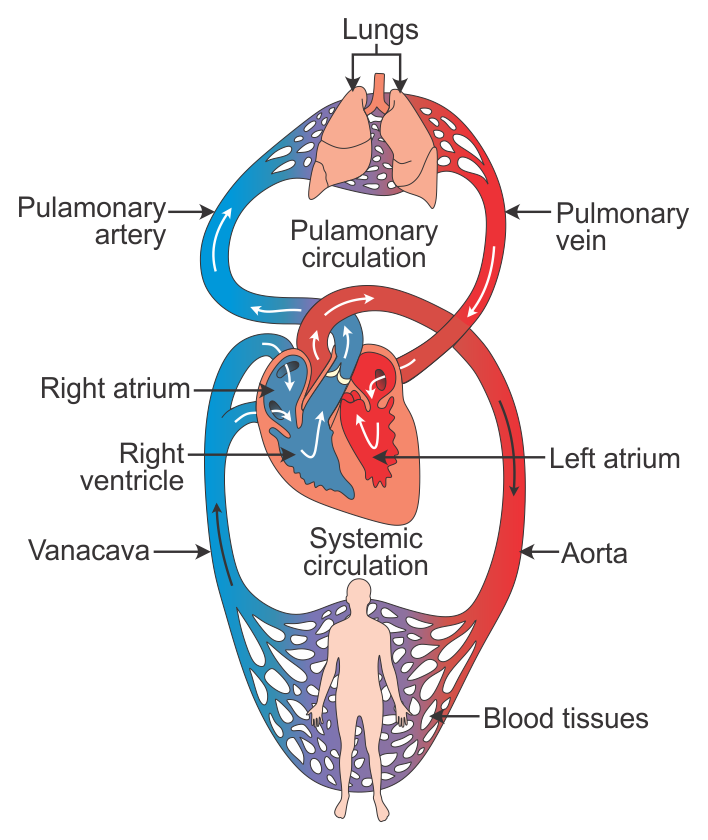Please explain double circulation with help of a diagram
Dear student,
Mammalian heart is 4 chambered, with 2 lower chambers called ventricles ( ventricle singular) and 2 upper chambers termed as atria (atrium singular). The blood passes through the heart twice in one complete cycle (pulmonary circulation and systemic circulation). This helps in complete separation of deoxygenated from the oxygenated blood, thus increasing the overall efficiency of circulation of oxygenated blood through the body. Since the blood goes twice through the heart, it is known as double circulation.

The path is as following:
The right auricle of heart contracts and passes the deoxygenated blood to the right ventricle, through an auriculo-ventricular aperture (tricuspid valve). The right ventricle contracts and passes the deoxygenated blood into the two pulmonary arteries, which pumps it to the lungs where the blood is oxygenated. From the lungs, the pulmonary veins transport the oxygenated blood to the left atrium of the heart.

Regards,


 DIAGRAM
DIAGRAM
